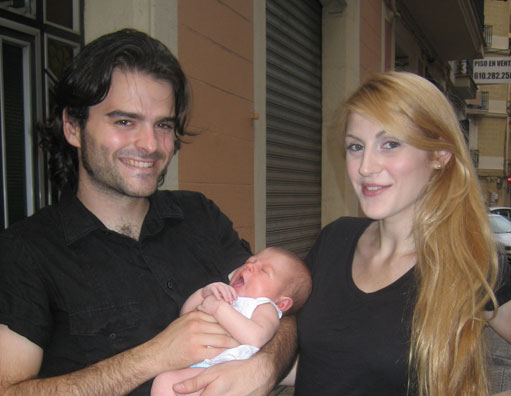Raul Murillo
28 July 2008 | By

Good luck has winked at Raul Murillo all his life, and he has seized his opportunities. The story of this Catalan engineer working on the ATLAS TDAQ group is full of remarkable coincidences.
The idea of living abroad never crossed Raul’s mind in his years of bachelor’s degree in electrical engineering at the Technical University of Catalunya: “Too complicated,” he used to think. But almost by chance, he joined the Erasmus mobility programme and did his final year dissertation at the Caledonian University in Glasgow. He enjoyed his life in the Scottish city and stayed on to do a PhD in real-time systems and monitoring in a MATLAB environment at the same university.
While writing his PhD thesis, a professor at Raul’s department came up with job offers from CERN. Despite Raul not being a physicist, the idea immediately seduced him as he was familiar with the quality research at CERN: “It was a good opportunity to use the programming skills I had gained during my PhD to develop software either for the experiments or for the LHC.”
Also, CERN brought back good old memories to Raul: “As a teenager, I remember seeing photos of experiments at CERN in a series of articles on particle physics published in a very famous Spanish popular science magazine called Muy interesante,“ he recalls.
“In the pictures, I was struck by how small people looked compared to the size of the detectors. I was also impressed by all the cabling and hardware and used to think ‘this is impossible to build’."
So, although pursuing a career in scientific research was never in Raul’s plans, the idea of becoming part of a huge international project at CERN led him into applying for a fellowship. “But I thought the application was never going to make it through,” Raul grins.
So, when he finished his PhD in 2004, Raul started to work for Motorola Global Software Group, in Livingston, near Edinburgh, where he worked developing embedded software for the car industry. After almost one year working in industry and to his surprise, he received an email from CERN in which he was offered a fellowship. In December 2004, he packed and moved to Switzerland: “The thing that most impressed me on my first day at CERN was entering Restaurant 1 and hearing so many different languages simultaneously: Russian, English, Japanese, Italian; I was astonished”
As a CERN fellow, he worked for almost three years with the TDAQ group, where he was in charge of developing the log service and the run controller for the ATLAS trigger. When the fellowship was over, Raul joined a research group at the University of California Irvine, where he is still working for the TDAQ, but also contributes to the CSC upgrade and maintenance of the ATLAS Muon Cathode Strip Chambers.
For now, Raul wants to stay at CERN, and see the switch on of the ATLAS detector: “I hope that all the effort will pay off with new discoveries that are expected and those that are still hidden to science,” Raul says.
But for Raul, the most exciting moment of his life was on June 28th, when he became the father of a beautiful baby girl, Helena: “All the coincidences in my life seem now to converge into me building up a beautiful family,” he says.



